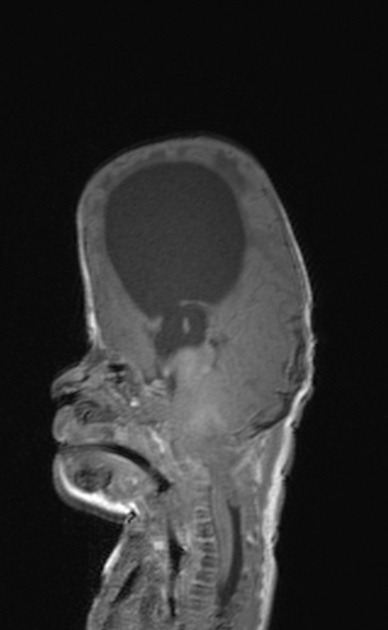Oxycephaly
Last revised by Ayush Goel
on 27 Jul 2022
Citation, DOI, disclosures and article data
Citation:
Goel A, Kang O, Bickle I, et al. Oxycephaly. Reference article, Radiopaedia.org (Accessed on 22 Feb 2025) https://doi.org/10.53347/rID-22722
Permalink:
rID:
22722
Article created:
19 Apr 2013,
Ayush Goel
Disclosures:
At the time the article was created Ayush Goel had no recorded disclosures.
View Ayush Goel's current disclosures
Last revised:
27 Jul 2022,
Ayush Goel
Disclosures:
At the time the article was last revised Ayush Goel had no recorded disclosures.
View Ayush Goel's current disclosures
Revisions:
10 times, by
5 contributors -
see full revision history and disclosures
Systems:
Synonyms:
- Turricephaly
- High-head syndrome
Oxycephaly (also known as turricephaly) is the most severe of the craniosynostoses and results from the premature closure of all sutures.
Characterized by a tower-like skull which may be associated with:
- 8th cranial nerve lesion
- optic nerve compression
- mental deficiency
- syndactyly
References
- 1. Kim HJ, Roh HG, Lee IW. Craniosynostosis : Updates in Radiologic Diagnosis. Journal of Korean Neurosurgical Society. 59 (3): 219-26. doi:10.3340/jkns.2016.59.3.219 - Pubmed
Incoming Links
Multiple choice questions:





 Unable to process the form. Check for errors and try again.
Unable to process the form. Check for errors and try again.